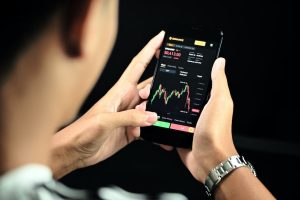Forex trading, also known as foreign exchange trading, is the largest and most liquid financial market in the world. It involves buying and selling currencies with the aim of making a profit from the fluctuations in their exchange rates. Forex trading has become increasingly popular in Australia, attracting both experienced traders and beginners alike. In this article, we will explore the benefits and challenges of forex trading for Australians.
One of the primary benefits of forex trading is its accessibility. Unlike other financial markets, such as stocks or commodities, forex trading is open 24 hours a day, five days a week. This means that traders can participate in the market at any time that suits them, regardless of their location. For Australians, this is particularly advantageous as it allows them to trade during their local trading hours, which is when the major forex markets are most active.
Furthermore, forex trading offers a high level of liquidity. This means that traders can enter and exit positions quickly and at a fair price. The forex market has a daily trading volume of over $6 trillion, ensuring there is always a buyer and seller for any currency pair. This liquidity is especially beneficial for Australian traders as it allows them to easily execute trades without experiencing significant slippage or delays.
Another advantage of forex trading for Australians is the availability of leverage. Leverage allows traders to control a larger position than their initial investment, magnifying their potential profits. However, it is important to note that leverage also increases the risk of losses. Australian forex brokers are regulated by the Australian Securities and Investments Commission (ASIC), which sets maximum leverage limits to protect retail traders. This ensures that traders can enjoy the benefits of leverage while maintaining risk management practices.
The forex market also provides a wide range of trading opportunities. Traders can choose from a variety of currency pairs, including major, minor, and exotic pairs. This allows them to diversify their portfolios and take advantage of different market conditions. For Australians, the most commonly traded currency pairs include the Australian dollar (AUD) against the US dollar (USD), the euro (EUR), and the Japanese yen (JPY). Being able to trade their local currency against major global currencies provides Australians with a unique advantage in the forex market.
However, forex trading also comes with its challenges. One of the main challenges for Australians is the time difference between Australia and the major forex trading centers, such as New York, London, and Tokyo. This can make it difficult for traders to actively monitor the market during their local trading hours. To overcome this challenge, many Australian traders use automated trading systems or rely on mobile trading platforms that allow them to trade on the go.
Another challenge for Australians is the volatility of the forex market. Currency exchange rates can be influenced by a wide range of factors, including economic indicators, geopolitical events, and central bank policies. These fluctuations can result in significant gains or losses for traders. To navigate this volatility, it is important for Australian traders to have a solid understanding of technical and fundamental analysis, as well as risk management strategies.
Additionally, forex trading requires discipline and emotional control. The market can be unpredictable, and it is easy for traders to make impulsive decisions based on emotions rather than logic. Australian traders need to develop a trading plan and stick to it, avoiding overtrading or chasing losses. They should also be aware of the potential psychological impact of trading and seek support or guidance if needed.
In conclusion, forex trading offers numerous benefits for Australians, including accessibility, liquidity, leverage, and trading opportunities. However, it also presents challenges, such as the time difference, market volatility, and the need for discipline. By educating themselves, developing a trading strategy, and practicing risk management, Australian traders can navigate the forex market and potentially profit from its fluctuations.






